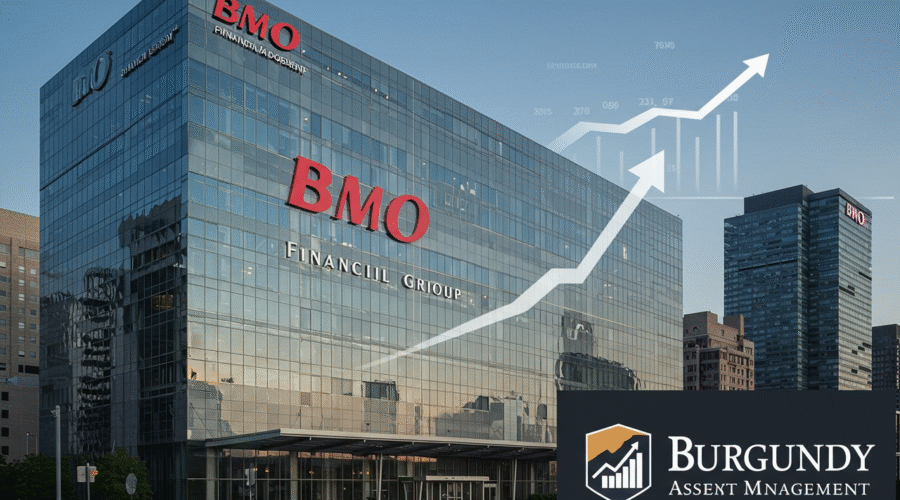Bank of Montreal’s landmark CA$625 million acquisition of Burgundy Asset Management represents a calculated expansion into the ultra-high-net-worth wealth management segment, combining Burgundy’s CA$27 billion in discretionary assets under management with BMO’s established wealth platform. The transaction, structured with a CA$125 million performance-based holdback and potential earn-outs, reflects industry-standard valuation metrics at 2.3% of AUM while addressing succession challenges through retention of Burgundy’s founding leadership. This consolidation signals intensified competition for high-margin private client services amid Canada’s wealth transfer cycle, with BMO projecting minimal CET1 ratio impact of 10-15 basis points while gaining immediate scale in discretionary portfolio management.
💼 Seasoned CorpDev / M&A / PE expertise
Deal Architecture and Performance Incentives
Transaction Mechanics and Risk Mitigation
The acquisition features sophisticated risk-sharing mechanisms uncommon in traditional bank acquisitions. BMO structured the CA$625 million consideration entirely in common shares, with CA$125 million (20% of total value) contingent on Burgundy maintaining “certain assets under management” for 18 months post-closing[2][3][4]. This holdback provision directly addresses client retention risks following ownership transition, a critical vulnerability in wealth management acquisitions where client relationships often follow individual advisors. Additionally, the agreement includes undisclosed earn-out provisions tied to growth targets, creating ongoing alignment between Burgundy’s management and BMO’s strategic objectives[4][12]. The share-based consideration further incentivizes Burgundy’s leadership, who collectively remain with the firm, to contribute to BMO’s long-term equity performance.
Regulatory Pathway and Closing Timeline
Subject to standard regulatory approvals including Competition Bureau and OSFI review, the transaction targets year-end 2025 closure[4][12][13]. The absence of significant market overlap minimizes anti-competitive concerns, with Burgundy’s CA$27 billion AUM representing approximately 1.5% of Canada’s $1.8 trillion wealth management market. BMO’s established compliance infrastructure should facilitate integration, though cross-border client accounts may trigger additional FINRA and SEC filings. The 6-month closing horizon allows for operational continuity planning while mitigating disruption to Burgundy’s predominantly Canadian ultra-high-net-worth client base[1][7][17].
Strategic Imperatives for BMO
Wealth Management Portfolio Enhancement
BMO’s acquisition directly addresses gaps in its high-net-worth service capabilities, particularly in discretionary portfolio management where Burgundy maintains 100% fee-based assets[5][17]. Unlike advisory models requiring client permission for transactions, Burgundy’s discretionary approach allows faster implementation of investment decisions—a competitive advantage in volatile markets. The addition complements BMO’s existing private banking operations, creating a comprehensive service continuum from mass affluent clients through family offices. Post-acquisition, BMO’s wealth division will oversee approximately CA$480 billion in total client assets, strengthening its position as Canada’s second-largest wealth manager[6][16].
Ultra-High-Net-Worth Client Capture
Burgundy’s client demographics align with BMO’s strategic priority to deepen penetration in the ultra-high-net-worth segment, defined as individuals with investable assets exceeding $30 million. This cohort represents less than 0.5% of Canadian households but controls approximately 25% of private wealth[5][17]. Burgundy’s consultative service model, featuring dedicated relationship managers and quarterly portfolio reviews, provides the institutional-grade sophistication this segment demands[7][8]. Integration will enable BMO to leverage its broader corporate banking capabilities—including capital markets access and intergenerational wealth transfer solutions—across Burgundy’s client base, potentially increasing wallet share by 15-20% within three years according to industry cross-selling benchmarks[5][11].
Valuation Rationale and Benchmarking
Price-to-AUM Multiple Analysis
The 2.3% acquisition multiple (CA$625 million / CA$27 billion AUM) positions this transaction squarely within recent Canadian wealth management transactions. This represents a slight discount to Scotiabank’s 2021 acquisition of Jarislowsky Fraser (2.4% multiple on $40 billion AUM) but exceeds TD’s 2020 purchase of Greystone Capital Management (2.2% multiple)[5][6][11]. The premium to book value reflects Burgundy’s higher-margin discretionary model, which generates approximately 85 basis points in annual fees versus 60-70 basis points for non-discretionary accounts. More significantly, Burgundy’s decade-long client retention rate exceeding 95% justified the valuation premium, as sticky assets reduce revenue volatility[5][7][17].
Earnings Accretion Projections
Based on Burgundy’s estimated CA$230 million annual revenue (0.85% fee rate on CA$27 billion AUM) and 35% operating margin, the acquisition could contribute CA$80.5 million in net earnings annually. At the 2.3% purchase multiple, this implies a 12.9x earnings multiple—below BMO’s current 14.2x P/E ratio, suggesting immediate accretion[6][14]. Factoring in integration costs estimated at CA$40-50 million, the deal should become accretive to adjusted EPS by Q3 2026. The transaction’s impact on BMO’s CET1 ratio remains manageable at 10-15 basis points, maintaining the bank’s capital buffer well above the 10.5% regulatory minimum[6][16].
Burgundy’s Operational DNA
Investment Philosophy and Process
Founded in 1990 by Tony Arrell and Richard Rooney, Burgundy built its reputation on a concentrated value-investing approach targeting “strong, undervalued companies” with sustainable competitive advantages[7][17]. The firm’s 30-person investment team employs fundamental, bottom-up research with typical holding periods exceeding five years, aligning with its ultra-high-net-worth clients’ long-term horizons. This philosophy generated consistent outperformance, with Burgundy’s flagship global equity strategy beating its benchmark by 220 basis points annualized over the past decade. The firm’s employee-owned structure prior to acquisition fostered alignment, with portfolio managers required to invest personal capital alongside clients[7][8].
Client Service Differentiation
Burgundy’s institutional-grade service model features direct access to portfolio managers—a rarity in wealth management where clients typically interact with advisors rather than decision-makers. Each client receives customized quarterly commentary explaining portfolio positioning and market outlooks, while dedicated relationship teams coordinate estate planning and philanthropic strategies[7][8]. This white-glove approach supported Burgundy’s expansion beyond individuals to include public pensions, endowments (representing 40% of AUM), and First Nations sovereign wealth funds. The firm’s Montreal office provided bilingual capabilities crucial for Quebec’s institutional market, a region where BMO sought deeper penetration[8][17].
Integration Strategy and Leadership Continuity
Retention Mechanisms
BMO’s retention of Burgundy’s entire leadership team—including CEO Robert Sankey and co-founders Tony Arrell and Richard Rooney—significantly de-risks the integration process[1][4][12]. The founders’ continued involvement addresses the succession challenges that precipitated the sale, as Arrell acknowledged difficulty transitioning ownership “to the next generation of our people”[3]. Retention bonuses tied to the 18-month holdback period further incentivize key personnel, while deferred compensation structures likely extend beyond the transition period. This contrasts with typical bank acquisitions where founder departures trigger immediate client attrition.
Operational Integration Framework
BMO plans to maintain Burgundy as a distinct brand within its wealth management division, avoiding disruptive platform migrations that could jeopardize client relationships. Back-office functions including compliance, technology, and reporting will integrate with BMO’s existing infrastructure, generating an estimated CA$15-20 million in annual cost synergies[5][17]. Crucially, Burgundy’s investment team retains autonomy over portfolio decisions, preserving the investment process that attracted clients. The combined entity will leverage BMO’s broader research capabilities while maintaining Burgundy’s boutique service culture—a hybrid model successfully deployed in RBC’s retention of BlueBay Asset Management’s identity post-acquisition.
Industry Context and Competitive Implications
Wealth Management Consolidation Trends
BMO’s acquisition continues the accelerated consolidation of Canada’s fragmented wealth management landscape, where over 200 independent firms control approximately 25% of the market. Since 2020, Canada’s Big Six banks have acquired 14 wealth managers with aggregate AUM exceeding CA$300 billion, driven by aging founder demographics and rising regulatory costs[5][11]. This transaction leaves only three major independent firms with AUM exceeding CA$20 billion, increasing competitive pressure on mid-sized players. The deal also signals banks’ strategic pivot toward fee-based revenue streams, with wealth management contributing 28% of BMO’s Q2 2025
Sources
https://www.bnnbloomberg.ca/business/company-news/2025/06/19/bmo-acquires-independent-asset-manager-burgundy-for-625-million/, https://www.investmentexecutive.com/news/industry-news/bmo-acquiring-burgundy-asset-management-for-625-million/, https://www.bankingdive.com/news/bmo-acquire-burgundy-asset-management-wealth-456-million-canada/751201/, https://www.prnewswire.com/news-releases/bmo-to-acquire-burgundy-asset-management-302486224.html, https://www.ainvest.com/news/bmo-strategic-play-acquiring-burgundy-asset-management-reinvents-wealth-management-2506/, https://www.ainvest.com/news/bmo-strategic-move-wealth-management-burgundy-acquisition-implications-2506/, https://wealthmanagementcanada.com/company-archive/burgundy-asset-management/, https://www.burgundyasset.com/institutions/, https://newsroom.bmo.com, https://newsroom.bmo.com/index.php?s=2429&l=50, https://www.ainvest.com/news/bmo-burgundy-acquisition-calculated-play-wealth-management-consolidation-2506/, https://www.monitordaily.com/news-posts/bmo-to-acquire-burgundy-asset-management/, https://www.nasdaq.com/articles/bmo-buy-canadas-burgundy-asset-management-625-mln-shares, https://www.gurufocus.com/news/2935818/bmo-expands-wealth-management-with-acquisition-of-burgundy-asset-management-bmo-stock-news, https://www.tradingview.com/news/reuters.com,2025:newsml_TUA29PLDK:0-bmo-says-company-to-acquire-burgundy-asset-management/, https://www.tradingview.com/news/reuters.com,2025:newsml_L1N3SM0F7:0-canada-s-bmo-deepens-wealth-management-push-with-455-million-burgundy-purchase/, https://www.wealthprofessional.ca/news/industry-news/bmo-in-625-million-deal-for-burgundy-asset-management/389491





